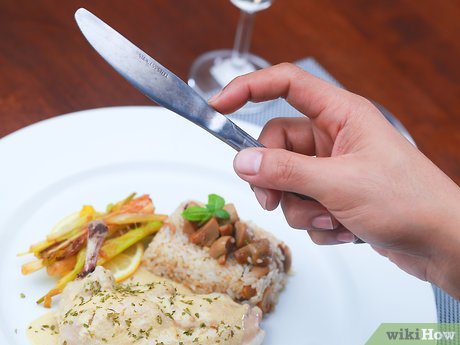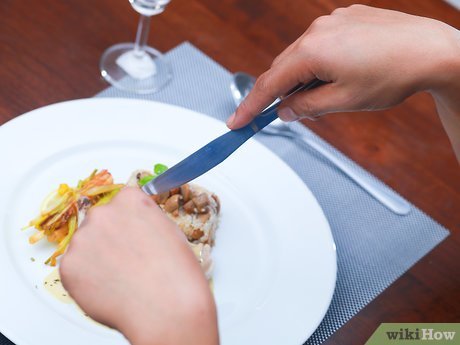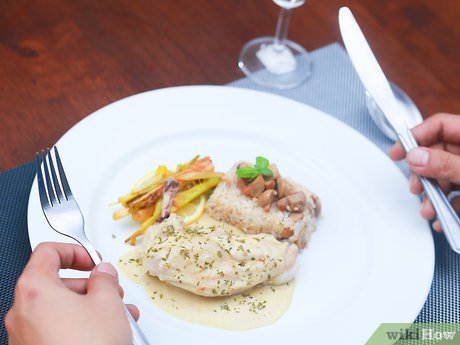How to use the cutleries in the restaurant
I found out that many do not know how to use the cutleries very well
It's easy to look like a primitive hunter as you hack away at your food with a knife and fork. But at dinner parties, at a restaurant or in formal occasions, you'll want to use these utensils in the classical manner. There's the European (or Continental) style and then there's the American Style. Which do you prefer?
1
Know that the fork is on the left side of the plate and the knife is on the right. If you have more than one fork, the outer one is your salad fork and the inner one is for your main dish. The fork for your main dish will be larger than your salad fork.
We'll cover table settings in the last section. For right now, let's concentrate on how to hold your utensils and get to eating! The "right" way, of course.

2
To cut into items on your plate, pick up and hold your knife in your right hand. The index finger is mostly straight and rests near the base of the top, blunt side of the blade. The other four fingers wrap around the handle. While your index finger is resting on the top, your thumb juxtaposes it on the side. The end of the knife handle should be touching the base of your palm.
This is the same in both styles. And both styles cater to right-handers. If you're left-handed, consider reversing pretty much anything you read on this topic.
3
Hold your fork in your left hand. The tines (prongs) face away (downward) from you. The index finger is straight, and rests on the back-side near the head of the fork, but not so close you are in danger of touching the food. The other four fingers wrap around the handle.
This is often referred to as the "hidden handle" method. This is because your hand is pretty much covering the entirety of the handle, secluding it from view.

4
Bend the wrists, so that your index fingers are pointing down towards your plate. This makes the tip of the knife and fork also point towards the plate somewhat. Your elbows should be relaxed and not at all up in the air or uncomfortable.
While we're at it, typically your elbows should be off the table at all times. But if you're taking a break from using your cutlery and in an informal setting, don't stress about it.
5
Hold the food down with the fork by applying pressure through the index finger. If you're cutting, place the knife close to the base of the fork and cut with a sawing motion. Foods like pasta will only require a swift, easy cut, while chewy meats will take a bit of work. Generally, only cut one or two bites at a time.
Hold the fork so the tines (prongs) are curving toward you, with the knife further away from you than the fork. At an angle is fine, too -- just make sure you can see your knife clearly to know where you're cutting. You should be able to look over your fork to your knife.
6
Bring smallish bits of food to your mouth with the fork. In this style of eating, bring the fork to your mouth with the tines curving downward. The back of the fork will be up as you bring it to your mouth.
Keep the fork in your left hand, even if you're right-handed. You may find that this method is the more efficient of the two if you experiment with both.
Source:
https://www.google.com.ng/amp/s/m.wikihow.com/Use-a-Fork-and-Knife%3famp=1
Get the video in our upcoming post
UPVOTE RESTEEMED AND COMENT YOUR VIEW @marvis7 love you all

Hi! I am a robot. I just upvoted you! I found similar content that readers might be interested in:
https://www.wikihow.com/Use-a-Fork-and-Knife
I was once visiting a Brazilian beef restaurant in Beijing, with an "open" kitchen, the customers could see the chefs working. A waiter came with a plate of food back to the kitchen, and the chef muttered "not again!", sliced up the big piece of beef into small cubes, and the waiter took it back to the customer again.
A lot of the customers simply didn't know how to use the utensils.